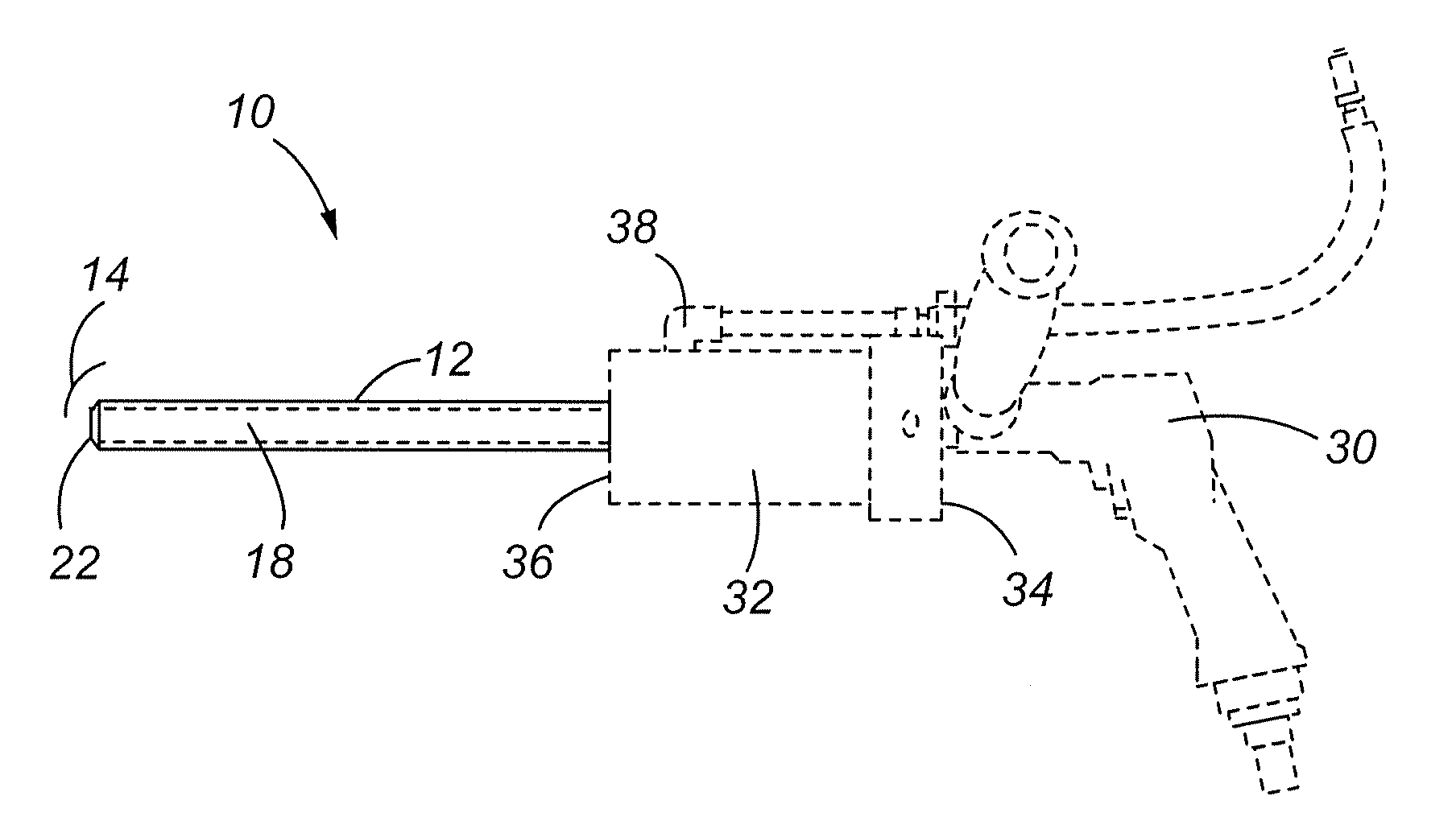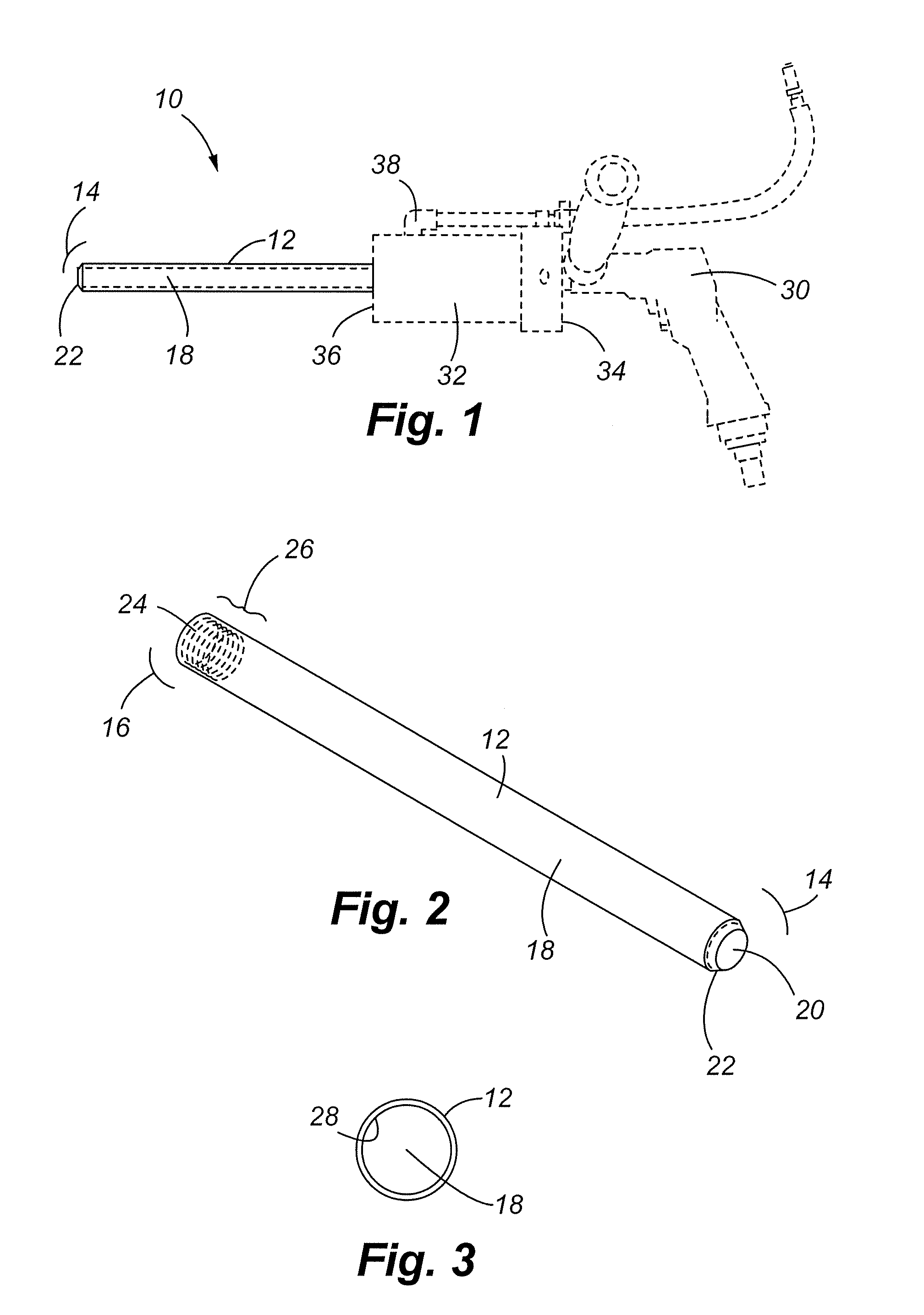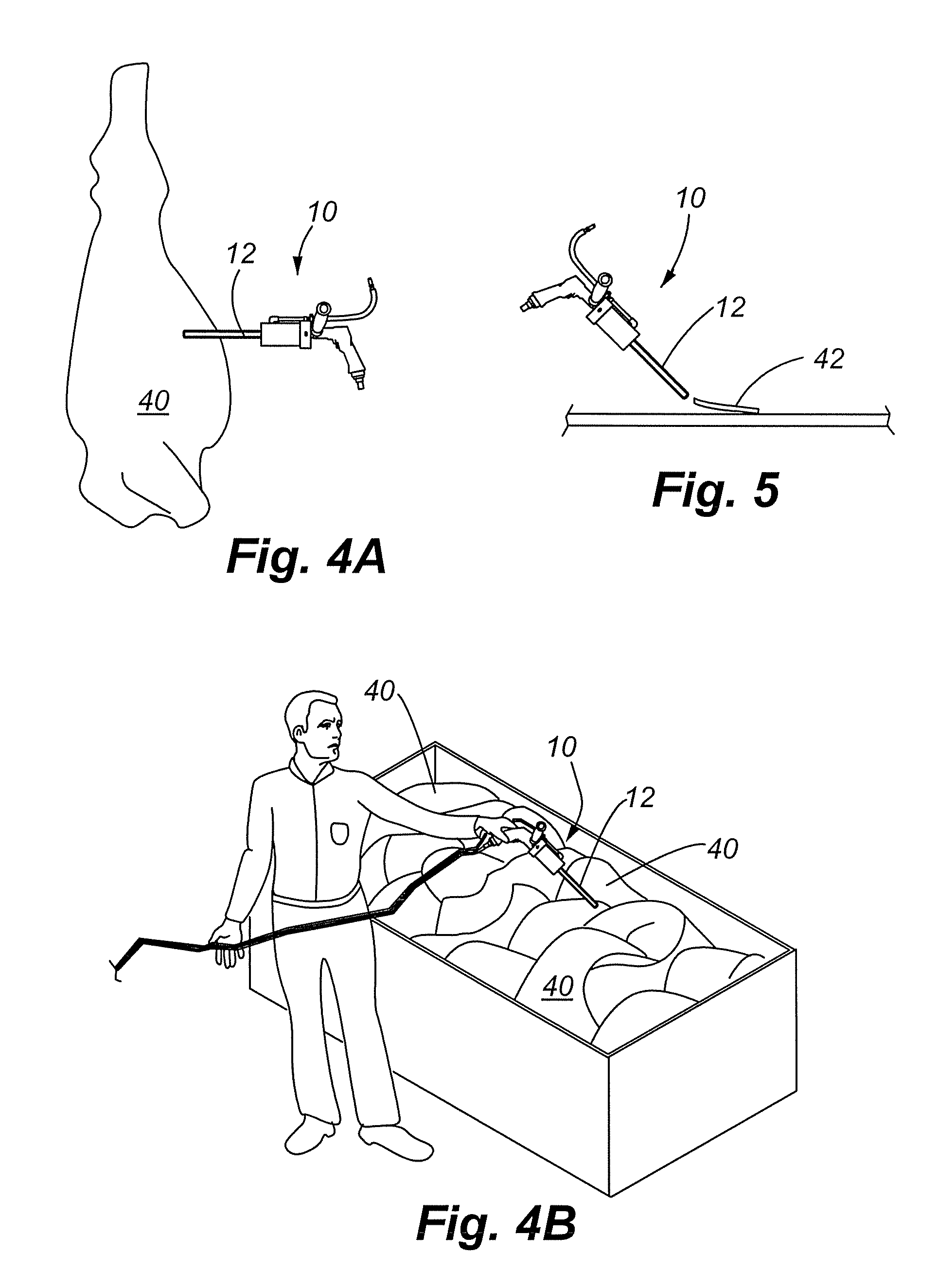Device for obtaining uniform samples of meat and methods of use thereof
a technology for obtaining uniform samples and meat, applied in the field of obtaining meat samples, can solve the problems of small to no uniform size of the samples collected, false positive of an otherwise uncontaminated bin, contamination, etc., and achieves the effects of quick and easy compliance, easy updating, and convenient scaling
- Summary
- Abstract
- Description
- Claims
- Application Information
AI Technical Summary
Benefits of technology
Problems solved by technology
Method used
Image
Examples
Embodiment Construction
[0024]Referring initially to FIGS. 1, 2 and 3, a device 10 for obtaining one or more essentially uniform samples of meat according to at least some embodiments of the present invention is provided. The device 10 is comprised of an elongated hollow member 12 with a first open end 14, a second open end 16 oriented opposite to the first open end, and an internal cavity 18 extending the length of the hollow member 12. The first open end 14 defines a first opening 20 in the hollow member which includes a cutting surface 22. The second open end 16 defines a second opening 24 in the hollow member and includes a coupling mechanism 26 disposed on the interior surface 28 of the hollow member 12 at the second open end 16. The coupling mechanism 26 extends along the interior surface 28 of the hollow member 12 at least partially into the internal cavity 18. The device 10 also includes a driving means 30 that applies rotational motion to the hollow member 12. The hollow member 12 is adapted to be...
PUM
| Property | Measurement | Unit |
|---|---|---|
| length | aaaaa | aaaaa |
| length | aaaaa | aaaaa |
| diameter | aaaaa | aaaaa |
Abstract
Description
Claims
Application Information
 Login to View More
Login to View More - R&D
- Intellectual Property
- Life Sciences
- Materials
- Tech Scout
- Unparalleled Data Quality
- Higher Quality Content
- 60% Fewer Hallucinations
Browse by: Latest US Patents, China's latest patents, Technical Efficacy Thesaurus, Application Domain, Technology Topic, Popular Technical Reports.
© 2025 PatSnap. All rights reserved.Legal|Privacy policy|Modern Slavery Act Transparency Statement|Sitemap|About US| Contact US: help@patsnap.com



